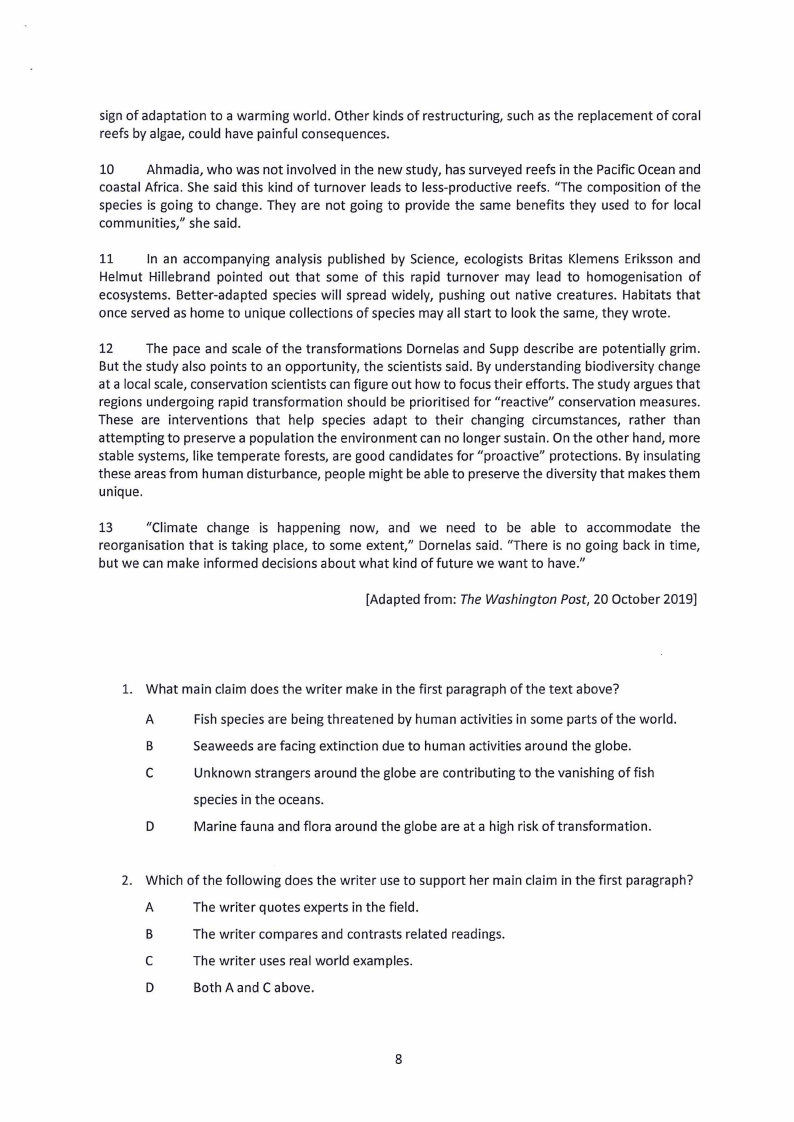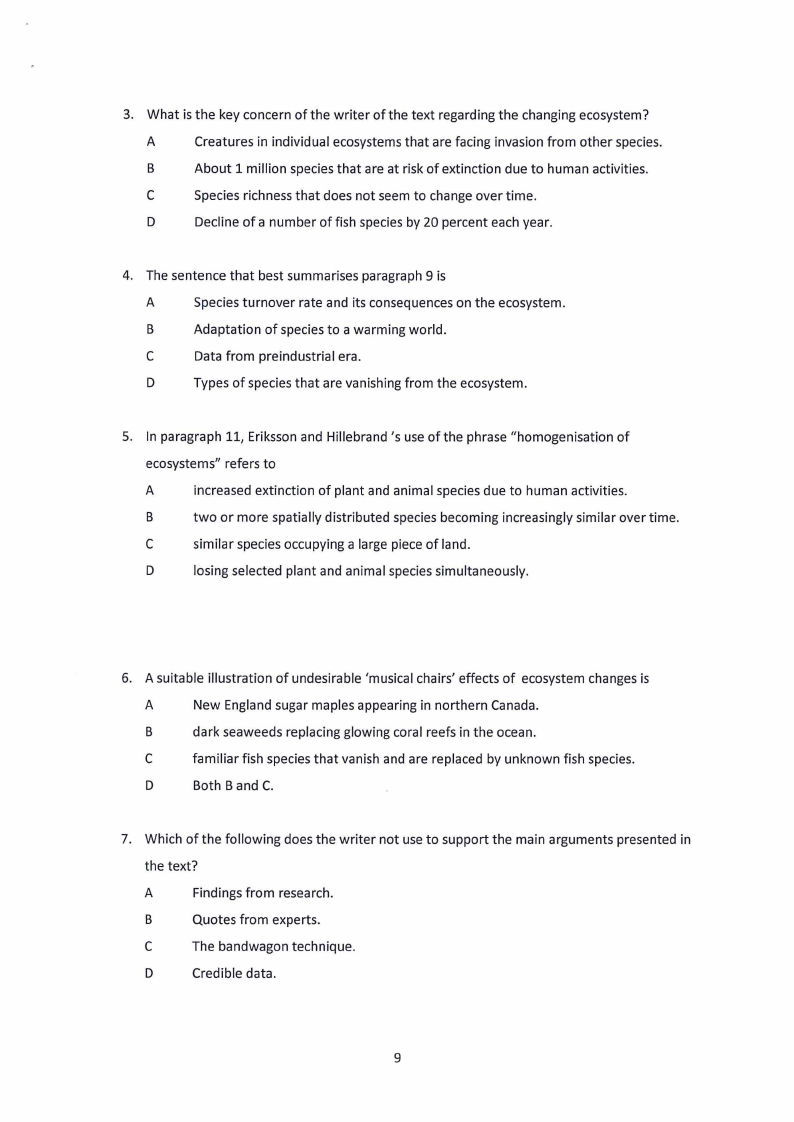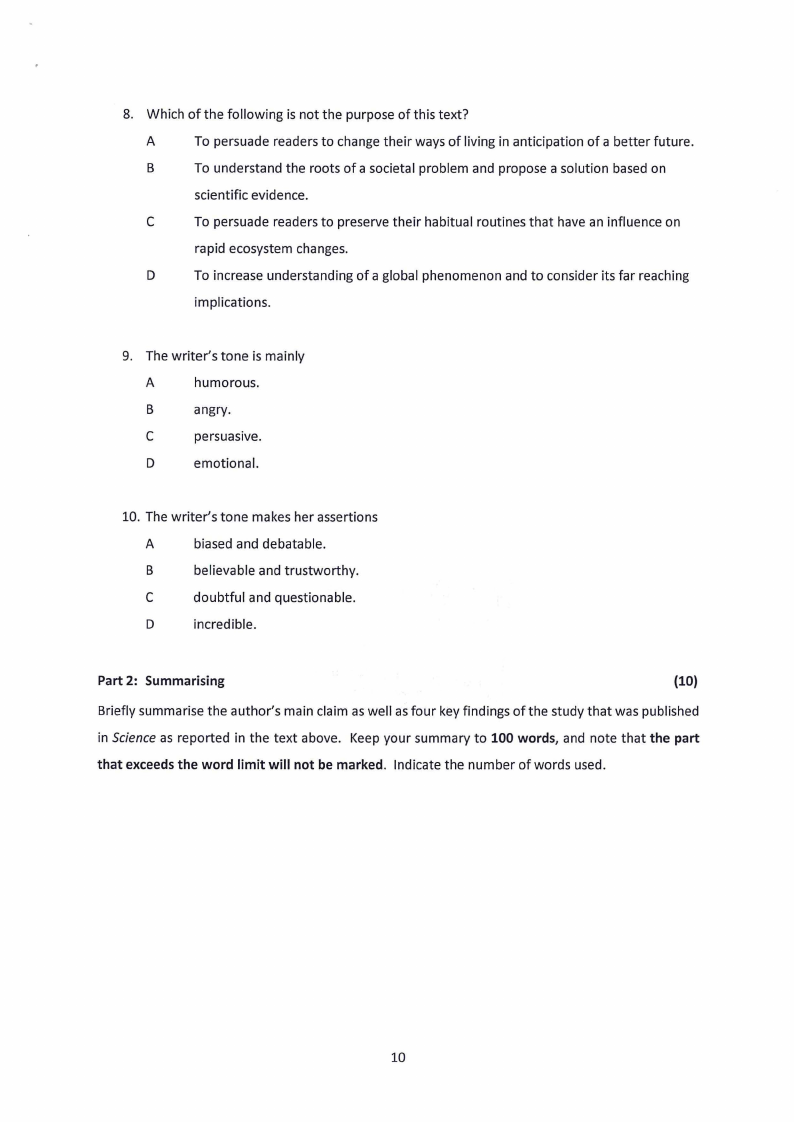
2
A sweeping survey published last week looked at tens of thousands of species counts from the
past few decades and found that the world's ecosystems are rapidly reorganising. On average, more
than a quarter of all plant and animal species within an ecosystem are being replaced every decade,
probably the result of local extinctions, the introduction of invasive species and migrations motivated
by climate change.
3
In the midst of a global environmental crisis, when an estimated 1 million species are said to
be at risk of extinction, the study offers an important look at biodiversity on the level of individual
ecosystems, the authors said. It suggests that for now, at least, human activities have resulted not so
much in outright losses as in large-scale reorganisation. But the function of ecosystems, which is their
capacity to filter water and clean air, to sustain the plants and animals we rely on and admire, depends
on the activities and health of their inhabitants. And those qualities are at risk.
4
"It is a little bit like we are playing musical chairs at the moment," said macroecologist Maria
Azeredo de Dornelas, a co-author of the report. "You have a lot of things moving around, and chances
are that some things are going to end up without a chair." The study, published last week in the journal
Science, draws on a massive new database called BioTime. The database, which Dornelas helped build,
contains more than 8 million measures of abundance on more than 40,000 species in roughly half a
million locations on land and in the oceans. This richness, said Sarah Supp, another co-author, allowed
the researchers to sift through global biodiversity trends and pinpoint changes happening on a local
scale.
5
"This was not really possible before," said Supp, a Denison University data scientist who
specialises in biodiversity studies. "But it is important because the scale at which our actions take place
are often much more pointed toward specific locations, or political boundaries that are not at the
scale of the globe."
6
The researchers were surprised to find that the heightened global extinction rate was not
reflected at the ecosystem level. In a few extreme cases, the number of species in a habitat declined
by as much as 20 percent per year. But on average, species richness, the head count of species present
in an ecosystem, did not appear to change over time. What is changing with alarming speed are the
kinds of creatures present.
7
"This paper really shows that, more important than just looking at the number of species in
an area, we need to look at the identity of those species," said Kimberly Komatsu, a global change
biologist at the Smithsonian Environmental Research Center who was not involved in the study. "And
even moving beyond that, we need to think about what the traits of these species would be and what
that means for the functioning of the ecosystem."
8
Marine ecosystems, such as reefs, are hot spots of transformation, the scientists found. The
waters of the western Atlantic and the northwest Australian shelf experienced rates of species
turnover much higher than the global average. Tropical regions also seemed to change more than
temperate ones, perhaps because these already-warm areas have now been heated to temperatures
for which most species are not adapted.
9
There is not enough data from the preindustrial era for scientists to know how much faster
turnover is happening because of humans. But evidence from past research suggests the current
average rate of 28 percent turnover per decade is at least two to three times higher than normal,
Dorne las said. To truly understand the consequences of this change, scientists will have to take a closer
look at which creatures are vanishing from individual ecosystems, and who is arriving to take their
place. Some turnover, such as New England sugar maples showing up in northern Canada, may be a
7


























